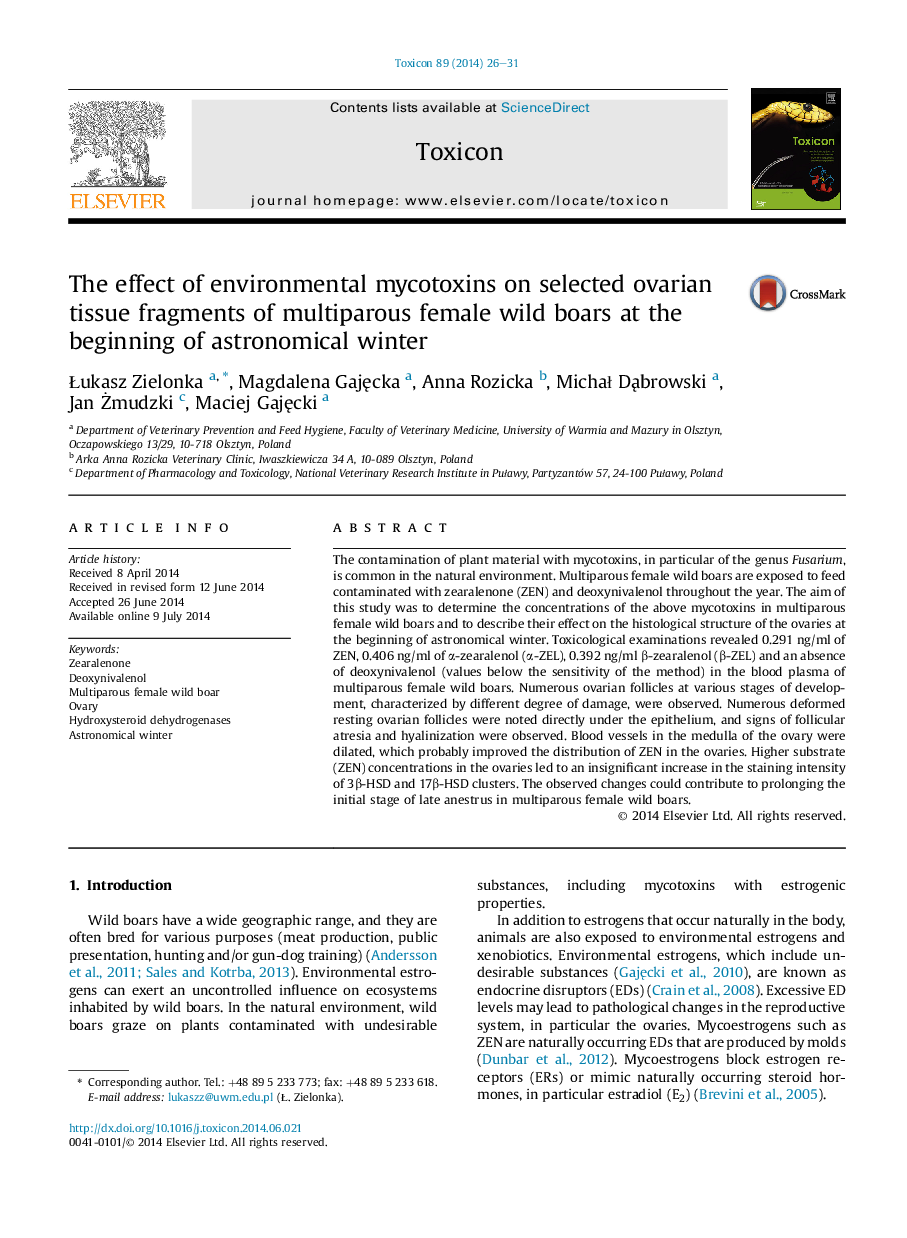| Article ID | Journal | Published Year | Pages | File Type |
|---|---|---|---|---|
| 2064640 | Toxicon | 2014 | 6 Pages |
•The contamination of plant material with mycotoxins is common in the natural environment.•Multiparous female wild boars are exposed to feed contaminated with zearalenone and deoxynivalenol throughout the year.•Numerous deformed resting ovarian follicles were noted, and signs of follicular atresia and hyalinization were observed.
The contamination of plant material with mycotoxins, in particular of the genus Fusarium, is common in the natural environment. Multiparous female wild boars are exposed to feed contaminated with zearalenone (ZEN) and deoxynivalenol throughout the year. The aim of this study was to determine the concentrations of the above mycotoxins in multiparous female wild boars and to describe their effect on the histological structure of the ovaries at the beginning of astronomical winter. Toxicological examinations revealed 0.291 ng/ml of ZEN, 0.406 ng/ml of α-zearalenol (α-ZEL), 0.392 ng/ml β-zearalenol (β-ZEL) and an absence of deoxynivalenol (values below the sensitivity of the method) in the blood plasma of multiparous female wild boars. Numerous ovarian follicles at various stages of development, characterized by different degree of damage, were observed. Numerous deformed resting ovarian follicles were noted directly under the epithelium, and signs of follicular atresia and hyalinization were observed. Blood vessels in the medulla of the ovary were dilated, which probably improved the distribution of ZEN in the ovaries. Higher substrate (ZEN) concentrations in the ovaries led to an insignificant increase in the staining intensity of 3β-HSD and 17β-HSD clusters. The observed changes could contribute to prolonging the initial stage of late anestrus in multiparous female wild boars.
